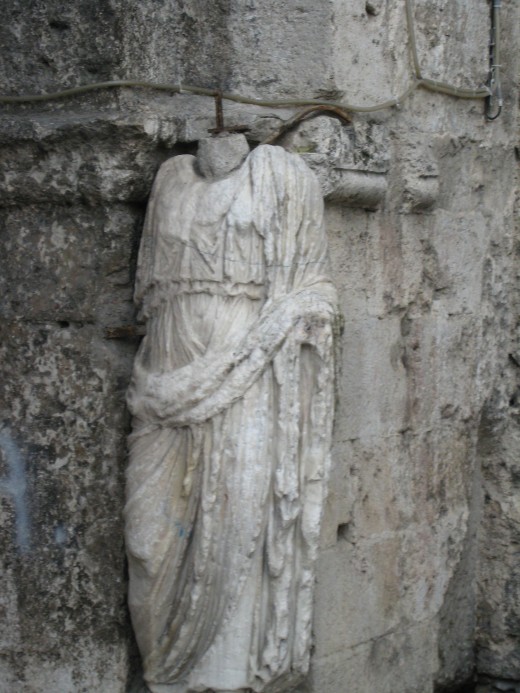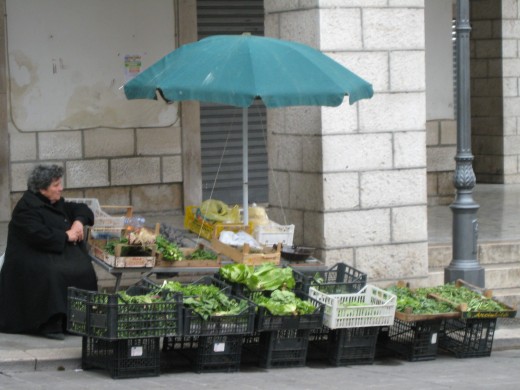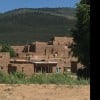Isernia, Italy - a Third Century B.C. City 65 km from Rome


Isernia Italy - Home
I have been fortunate to live and to travel to many places in Europe during my lifetime and I have written a number of articles about some of these beautiful places. But, the most precious place I have been in Europe is in Italy and is the birthplace of my maternal grandfather, Eduoardo Guglielmi, in Isernia, Italy. It is an absolutely beautiful city of about twenty to twenty-five thousand people, about sixty-five kilometers east of Rome, nestled at the base of the Appenine Mountains. Here live the families of three of my grandfather's siblings and I have visited with them several times over the last thirty years, most recentlly in the spring of 2010.
Isernia in Italy has one of the oldest histories of any city in the entire country of Italy. It was founded three centuries before the birth of Christ by the Samnites, a warrior tribe of original Italian people. The Samnites ruled the Abruzzi-Molise region of Italy up until the Romans ruled Rome. They were conquered by the Romans, and for a short time had the status of slaves under Roman rule. But the Samnites were not just warriors -- they were a highly intelligent and civilized tribe of Italians and were not about to remain slaves to the Romans. The Samnites entered into negotiaions with the Romans and over time, negotiated free citizenship as Roman citizens that ended their slave status. Through legal, judicial negotiations, the Samnites became full Roman citizens on equal status with the Romans, and carved out individual freedoms of citizenship with laws to ensure these freedoms to modern times today. Not only does Isernia represent the city of my grandfather's birth, but also the birth of individual rights and freedoms and law in Italy.


My Grandfather's Birthplace
The photo above is a picture of the front door of my grandfather's birth place. It was originally built in the 12thcentury and is in the center of the old, original part of Isernia. That home has been in my mother's family, the Guglielmi family in Italy, for all these centuries. Today, my cousin, pictured above, Cosmo Guglielmi, has remodeled it inside to be his architectural office and business he runs with his wife, Adrianna, and a friend of his. All the buildings and streets in this old section of Isernia, have been around since the 12th and 13th centuries. The streets are very narrow, shaded and very cool during the hot summers in Italy. If you continue walking down this street, it empties into a large town square today called Piazza Celestino, and there you will find the water fountain pictured above. During the 10th century, the Italians in Isernia built an aquaduct that carried the water from the mountains down to the town and to this fountain. Today, the water from this fountain is fresh spring water from the Appenine Mountains and flows continuously. It is fresh and so good to drink anytime from this fountain.
You can probably understand how awed I was to visit this birthplace of my grandfather (b. 1900) that has been standing since the 12th century. It is hard to imagine the Guglielmi family history that has gone on in this home for the last eight centuries. We have been able to trace our Guglielmi family history back to the thirteenth century in Isernia, Campobasso and Cantalupe, Isernia. These three cities are all in the same Abruzzi-Molise region. You cannot imagine how wonderful it is to be part of the Guglielmi family that has such a long history and has been in Isernia for so long.
By the way, the name Guglielmi means Williams in English. My grandfather lived and studied in Isernia and Florence until 1920 when he came to America to visit an aunt. He met my grandmother, also Italian, fell in love and stayed in America, eventually becoming an American citizen. He was an architect and stone mason and his works here in America are another story and hub.




- Edward Guglielmi -- Italian Master Stonecutter and Architect -- My grandfather
Edward Guglielmi, architect and stone mason To me he was just Grandpa Guglielmi. I remember the family dinners with all my aunts, uncles, and cousins and all that great Italian food and grandpa sat at the head of the large, large, dining room...
My cousins, Maria and Ana, whose mother was my grandfather's older sister (pictured above), live in the Piazza X Septembre 9, right outside of the old city gate. Today, this area is a thriving business area melding the old with the modern. You will see specialty shops selling fish, meat and dairy products alongside the vegetable market stand. It is a blend of the old and modern ways of Italy, always preserving the original Italian culture.
Maria shops daily for that day's meals and the food in Italy is so much fresher than what we get here in the U.S. My mouth literally salivates when I'm in the fresh cheese store viewing fresh mozzarella, scamortz and riccotta cheeses. The Abruzzi-Molise region is known for its great production of dairy products, cheeses and homemade wines. I can make a meal of Italian bread, cheeses and wine, alone. But, that is not how my family eats.
Breakfast is always what we call a continental breakfast -- espresso, cappucino, or cafe latta and a sweet roll or cookie. Then, around eleven a.m., after the daily grocery shopping is done for the day, the Italians have a merenda, a snack, of fruit -- an Italian orange, fig, or date. This gets them to the dinner hour, one or two p.m., and the main meal of the day. This meal usually begins with procuttio (cured ham) wrapped around a piece of cantalope, then soup or pasta, then meat or fish with fresh vegetables. After this, comes the ensalada mixta (tossed salad), and then a plate of fresh cheeses and fruit. All this is washed down with an Italian table wine. This meal usually takes about two hours of eating and family discussion filled with laughter and interesting topics of the day. Then, it is back to work outside or inside the home. A late night light supper of a frittata (omelette) or a salad and bread is eaten around seven or eight p.m.
Here in America, if we ate the fresh foods as the Italians do, we would not have the weight and obesity problems that we have today. The Italians do not eat the amount of processed or fast foods that we normally eat everyday here in the U.S. I know our American culture is not set up for shopping daily for our groceries, but if we did, we would be a much healthier country.
It is wonderful to just walk and meander around and through the streets in the old section of the city of Isernia. Children play in the streets and piazzas (squares) and small businesses like shoe repair stores, jewelry stories, dress shops and shoe stores are scattered among the homes in this old section of town. Most of the homes are what we know as townhouses here in the U.S. The homes are narrow and three or four stories high, and the stairways in the homes are made of marble and not easy on the knees and ankles. It is amazing to watch Italians dash up and down these stairs, without railings or banisters, to go from room to room. My cousin's architecture office is on three levels, and he runs up and down steep flights of marble stairs like he is running the 100 yard dash.
If you are ever in Rome and have time to make a side trip, take a day or two and see Isernia, Italy. You will find the Italians living there enchanting and charming and friendly. If you rent a car you can easily drive there from Rome or take the train (an hour and a half ride) right into the train station in the old section of Isernia. When you leave the train station, turn left and walk the winding streets into the Piazza Celestino and the water fountain. Stop at the fountain and have a drink of the fresh mineral water coming from the mountains surrounding Isernia, and stop at a cafe in the piazza for an espresso or cappucino or glass of regional wine and a dish of pasta. You will be in the heartland of Italy, and if you ask, I'm sure someone can point you in the direction of a Guglielmi family member.










